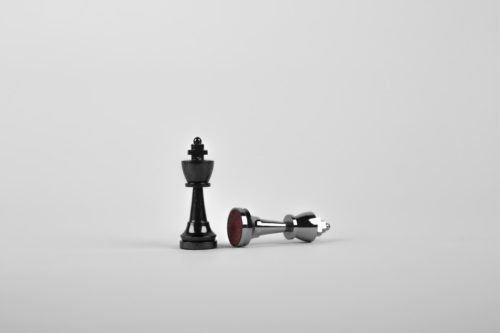This design course is my current battle field. Each day, I am forced to bleed out yet another new idea from a fully-drained idea bank. I shatter nerves and pull muscle frantically diving towards end-of-day deadlines. I wrestle with new and strange software. I grapple with a pencil to produce barely coherent sketches; choke my brain with designer trivia; wring out reports; swipe material for my visual diary; investigate personas; draft plans on brand ideas: duck from ugly subway posters, and combat the urge to analyze the layout of every book I read.
All that is the easy bit. The biggest battle I wage is with the endless chatter of my ego. From the moment I set foot in the classroom to the walk back home, this ego is my crazy-man-on-the-subway whom I have been trying to ignore and struggling to subdue.
Humility, or the absence of ego, is like a muscle that needs to be trained. Subjecting the muscle to effortful activity strengthens it. To remove ego, Ryan Holiday suggests “put(ting) yourself in rooms where you’re the least knowledgeable person. That uncomfortable feeling, that defensiveness that you feel when your most deeply held assumptions are challenged—what about subjecting yourself to it deliberately?” I confirm. With this course, my efforts to remove ego is in Iron Man mode.
You see, ego is our own personal marketing strategist. Its aim is to construct a formidable story of ourselves to sell to others, to establish our “market position”. To do this, our ego picks what it believes are our unique selling points and exploits it. And it panics when this neat little marketing story is threatened. It babbles, it chatters, it blubbers.
You can imagine the hysterics mine was in since I started the course. “Double-u. Tee. Eff,” it whined. “Mediocrity is NOT a good story to sell.” And everyday, it slithers in and tries to lure me away. “Why work so hard? You could be back in NY. Or on vacation. How about you call in sick and hie off to Paris for the rest of the term?” While I get design advice from a classmate, its unproductive voice interjects, “She was born while you were on your way to prom. What does she know?” It attempts to convince me that getting feedback is unnecessary. And it flashes neon signs above friends who are rising the corporate ladder, “See what you’re missing?”
Ego is the old-fashioned supervisor that stifles us. It keeps us from exploring and pushing ourselves. From learning new skills. From showing our amateur work. It denies us self-improvement and keeps us wedged in the flimsy, pretty packaging it has made for us. And so if we have the earnest desire to learn something new, we should be prepared to put in the hard work, buckle down and wage the daily war against this crazy chatter.










 New Yorkers are open books with anybody willing to listen. Accustomed to being ‘polite’ and respectful of other people’s personal space, most outsiders would cringe at this overexposure. In most parts of the world, the norm for ‘proper’ conversation, particularly with strangers, remains within the boundaries of the “safe topics” — the weather, where we went, what we did. Consequently, interactions are sterile and forgettable. I would add that when dialogue is limited to how great things are going and what achievements we’ve accomplished, the result is boredom. Alain de Botton, in his
New Yorkers are open books with anybody willing to listen. Accustomed to being ‘polite’ and respectful of other people’s personal space, most outsiders would cringe at this overexposure. In most parts of the world, the norm for ‘proper’ conversation, particularly with strangers, remains within the boundaries of the “safe topics” — the weather, where we went, what we did. Consequently, interactions are sterile and forgettable. I would add that when dialogue is limited to how great things are going and what achievements we’ve accomplished, the result is boredom. Alain de Botton, in his 